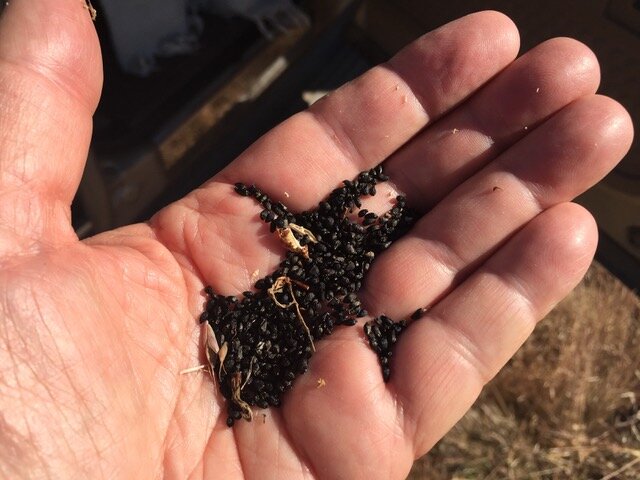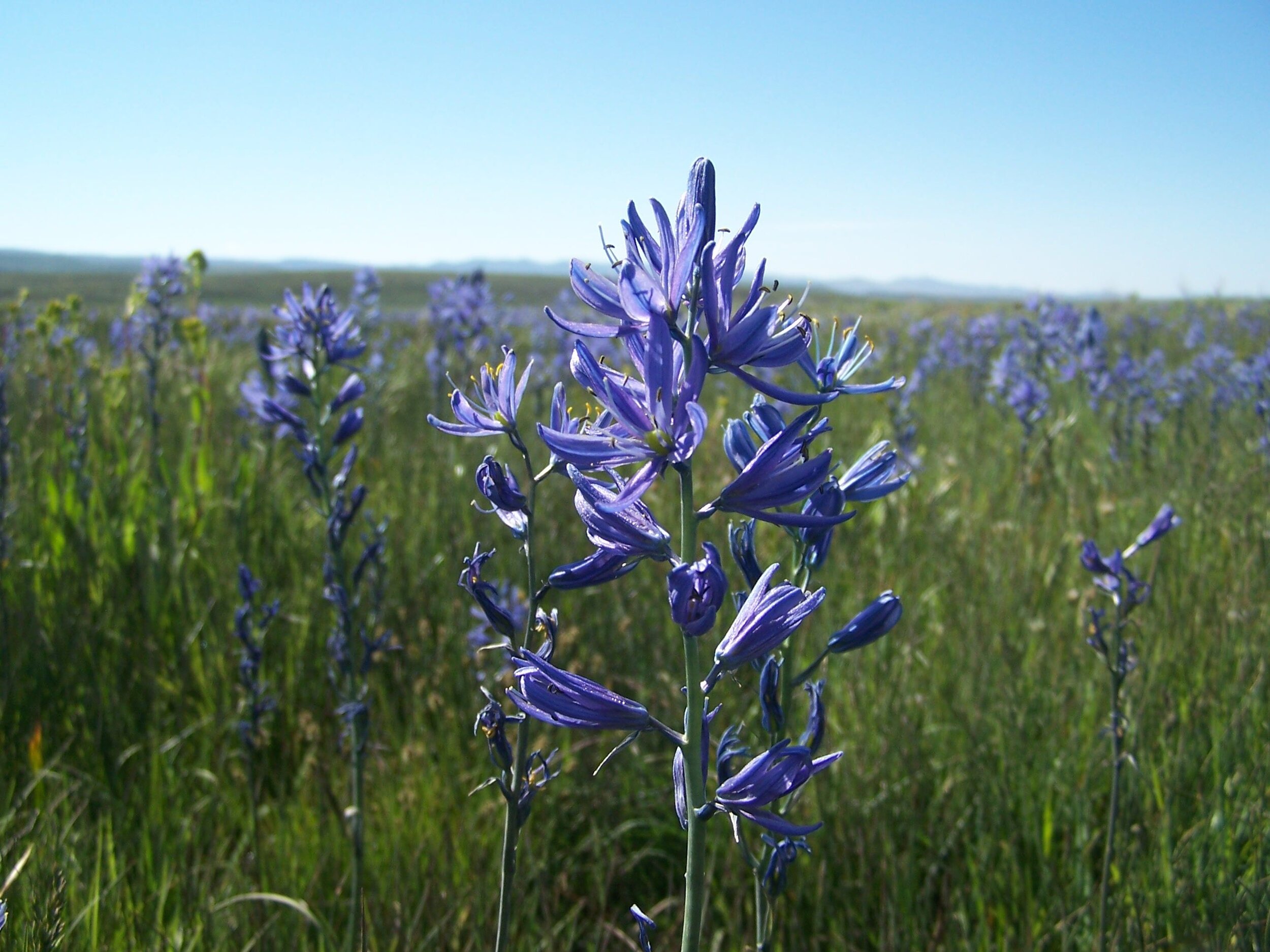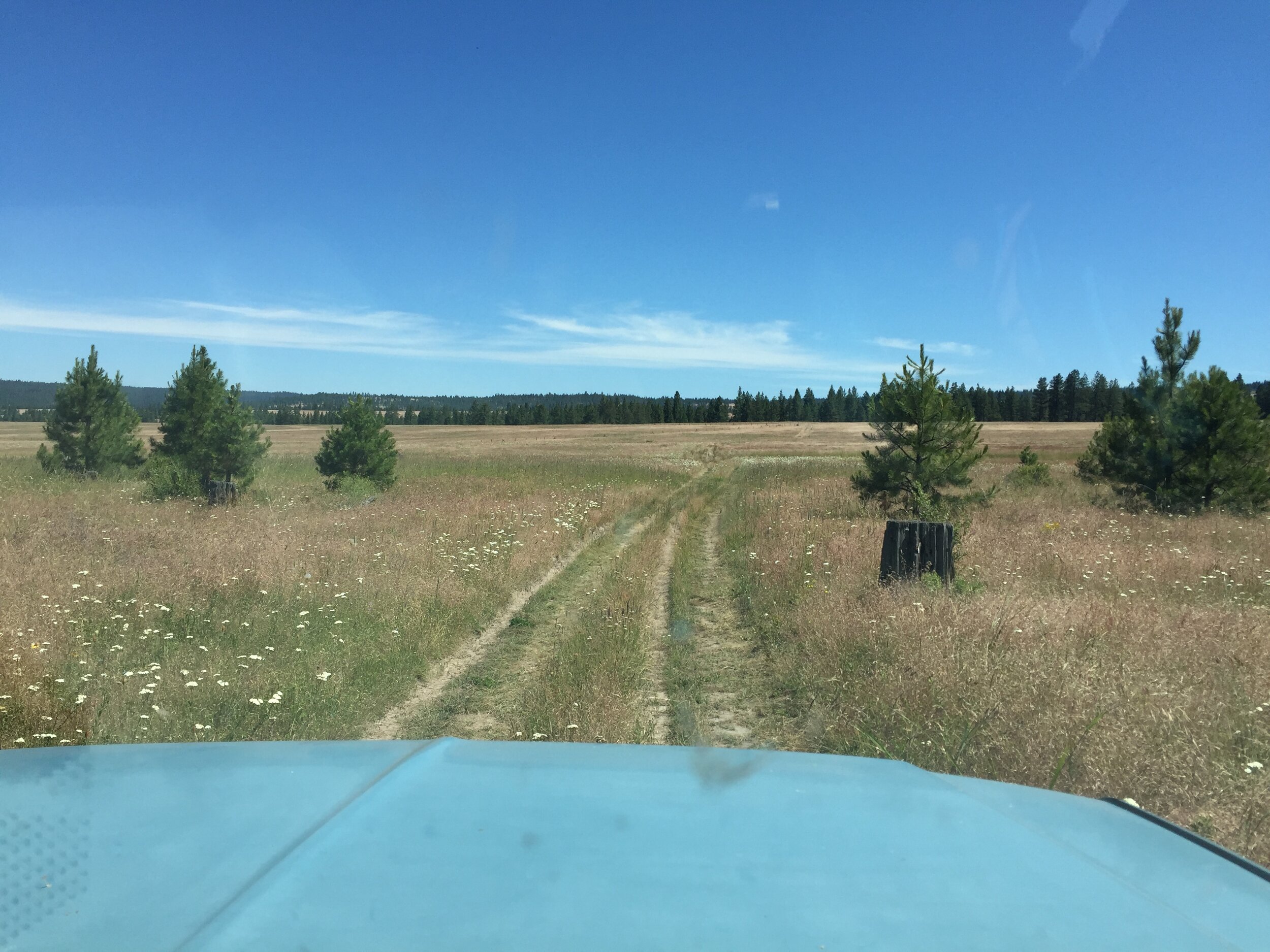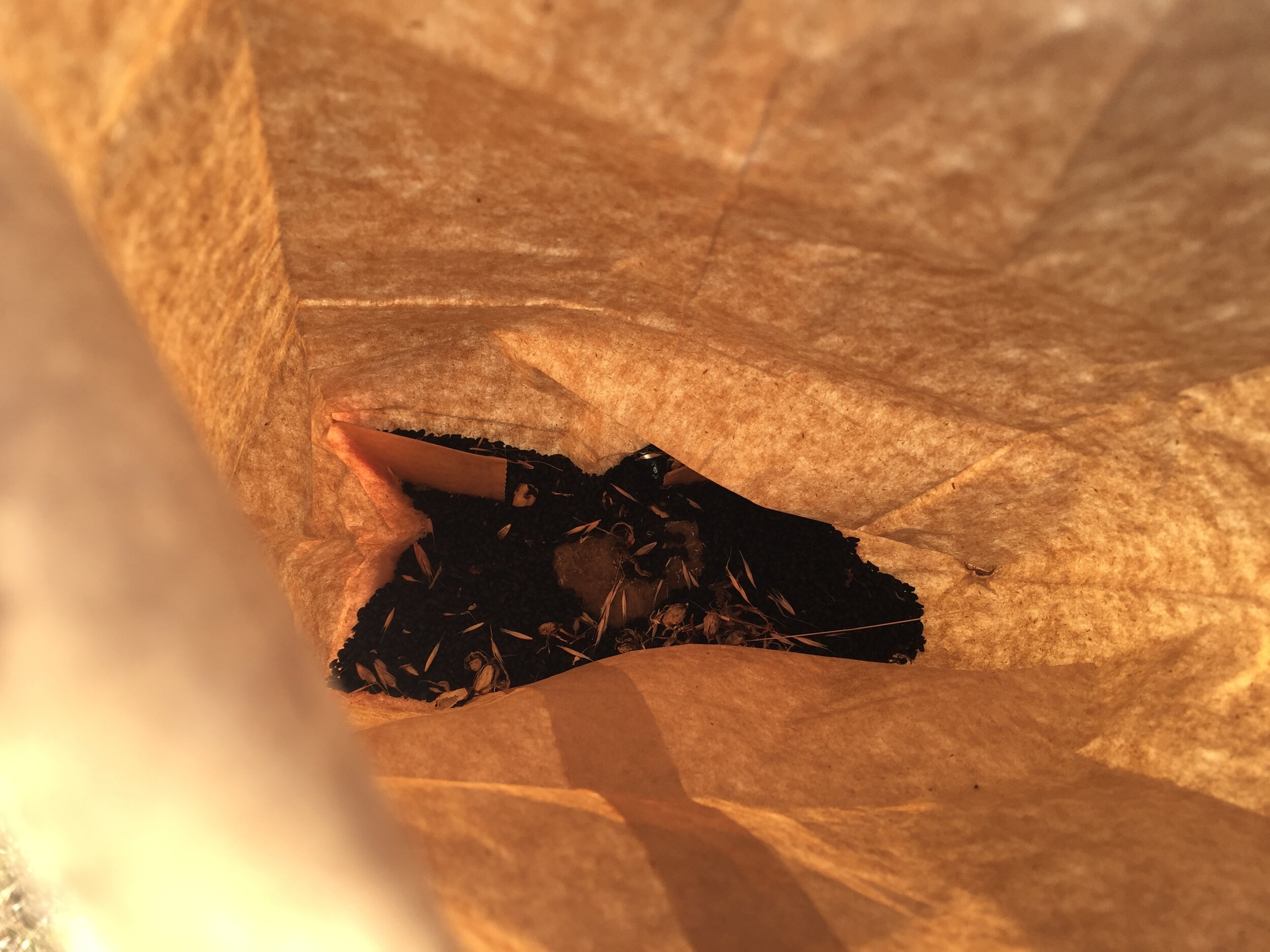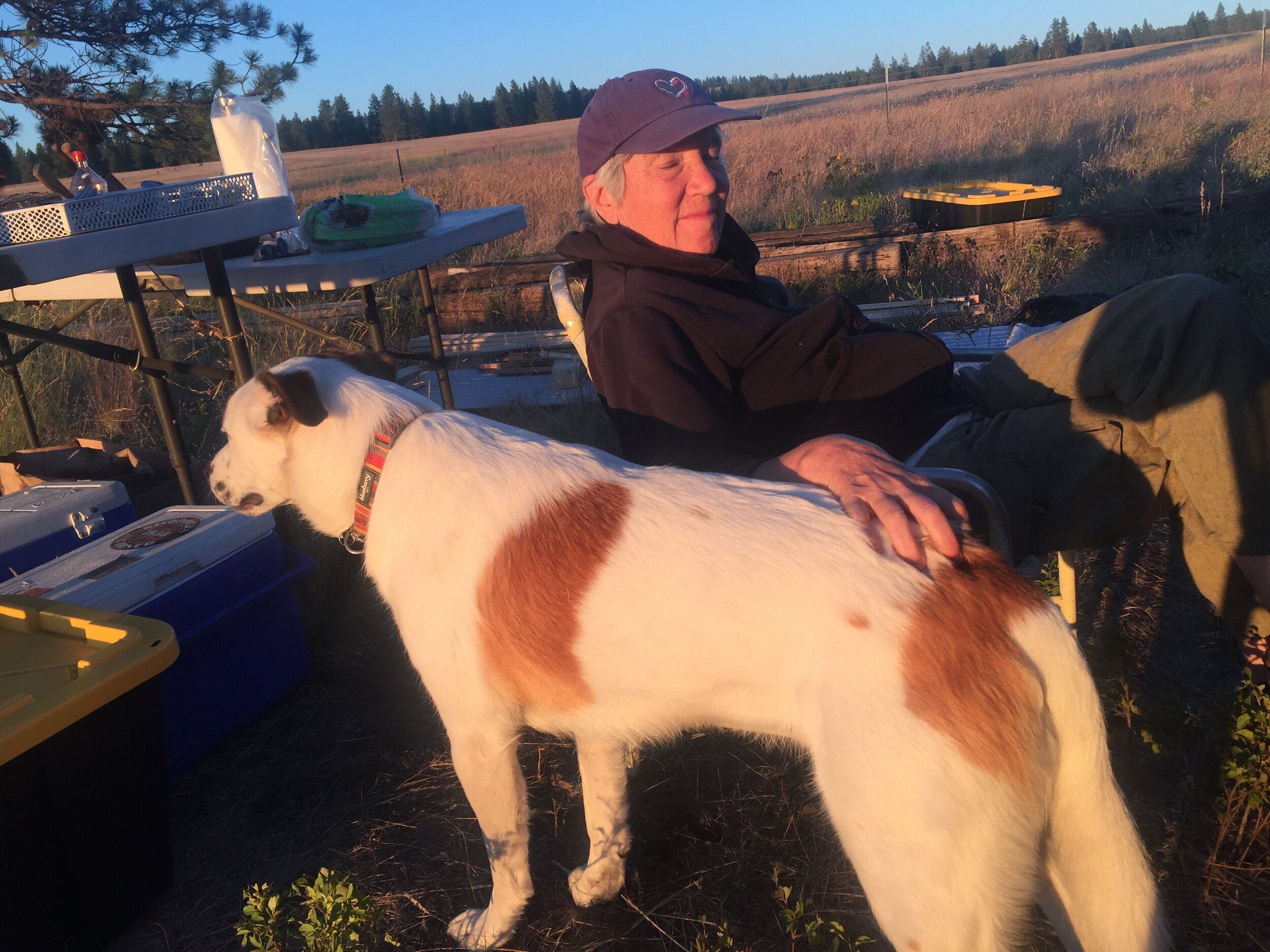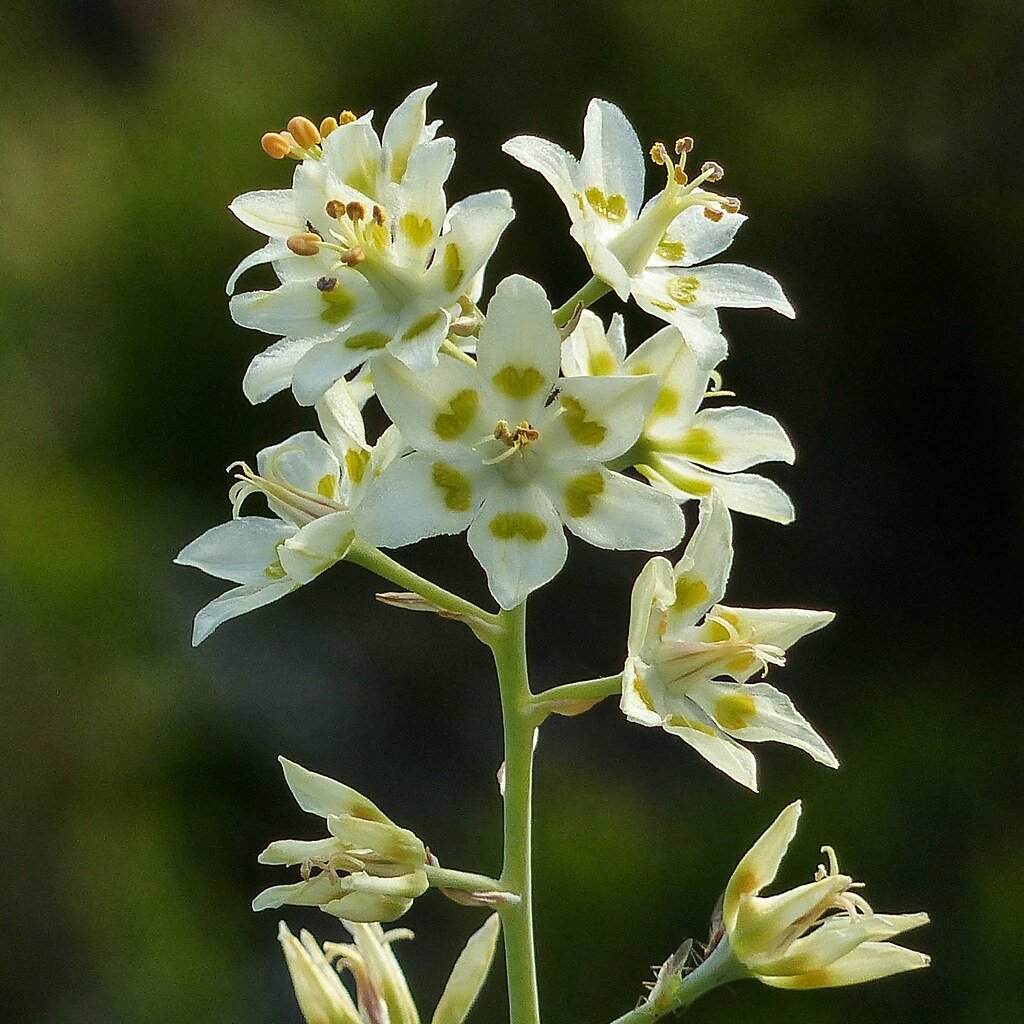Camassia quamash, or camas for short, is our target species for grassland restoration in the Blue Mountains of eastern Oregon. This bulb, which is related, to asparagus was and continues to be an important “first-food” species for the tribes of the Northwest. Historically the bulbs were tended by setting periodic fires to encourage the camas’ growth. While harvesting larger bulbs to eat, the smaller bulbs were divided and spread to increase the stand.
Camas is declining due to a century of cattle overgrazing. We are collecting and planting for diversity of the meadow in an effort to mitigate the adverse effects. Our goal is to gather ripe seeds during a narrow mid-summer seed window with the intent of planting them in the meadow where they have been out-competed by weedy non-native species.
To accomplish this, we rallied two hardy volunteers to join us in roughing it in July, during a summer heat wave where temps in the flatlands regularly topped 110. However, up in the Blues daytime temps rarely went above 90 and we had plenty of shade oaks and a nearby creek to keep us comfortable during midday. At 4200 feet, night temps can plunge into the mid 40s so we needed to be prepared with lots of wool blankets and down jackets.
The first morning we set out at daybreak with shears and paper bags to begin collecting. This would give us working time of 3-4 hours before the summer sun began baking our brains.The process: walk, stalk, bend, cut, shake the seed head into the bag. Each dried camas stalk would yield a few precious grams. Repeat until lunch. It’s either a peaceful Zen activity or torturous menial labor – all about perspective. As we picked and the bags were filled, it was satisfying to hear the seeds rustling against the bag. After a week of daily collecting we had close to five pounds of small black seed. A very respectable total.
Hand collecting seed is a good option to give Mother nature a chance to do her hear healing magic, boost a restoration project, and secure a portion of the camas harvest from mice and birds so that we can increase our targeted species.
Postscript: Some of the seed was hand-sown in on the site just before the snow fell. In another month after the snow has melted we’ll start watching for the blades of green to appear, signaling our success and another patch of the lovely edible blue camas. A word of caution, there is a white-flowered “camas” that is poisonous , aptly named Mountain Death Camas, Zigadenus elegans. So if you are wildcrafting and harvesting…know your plants!!
